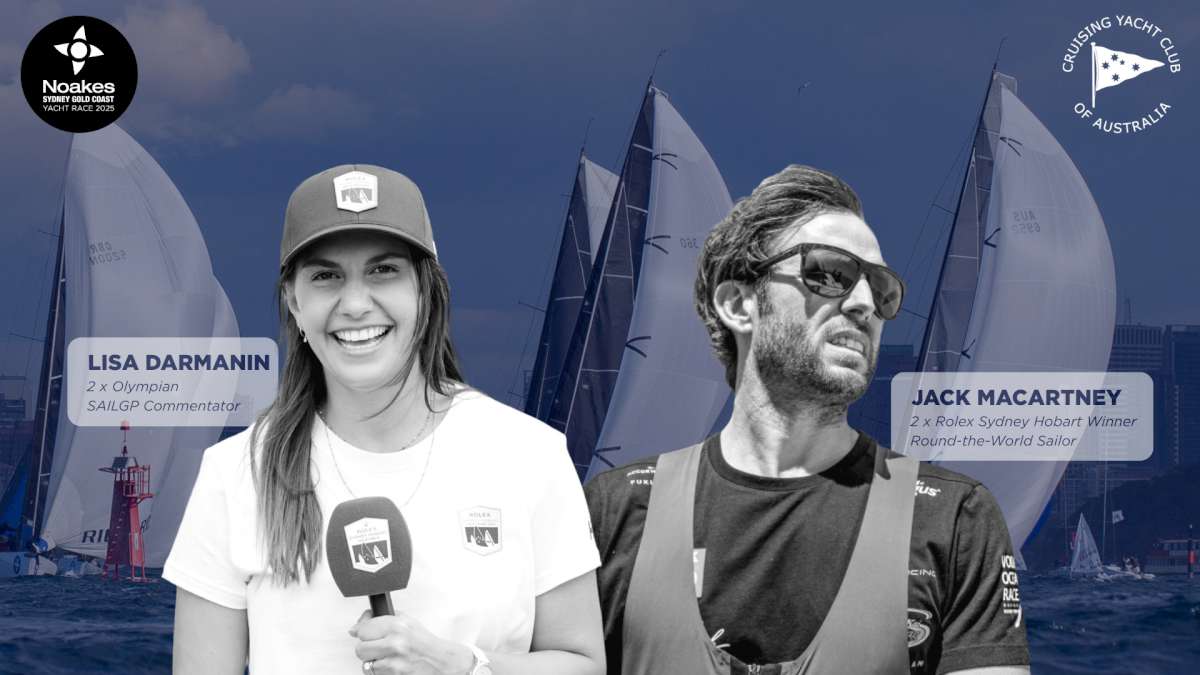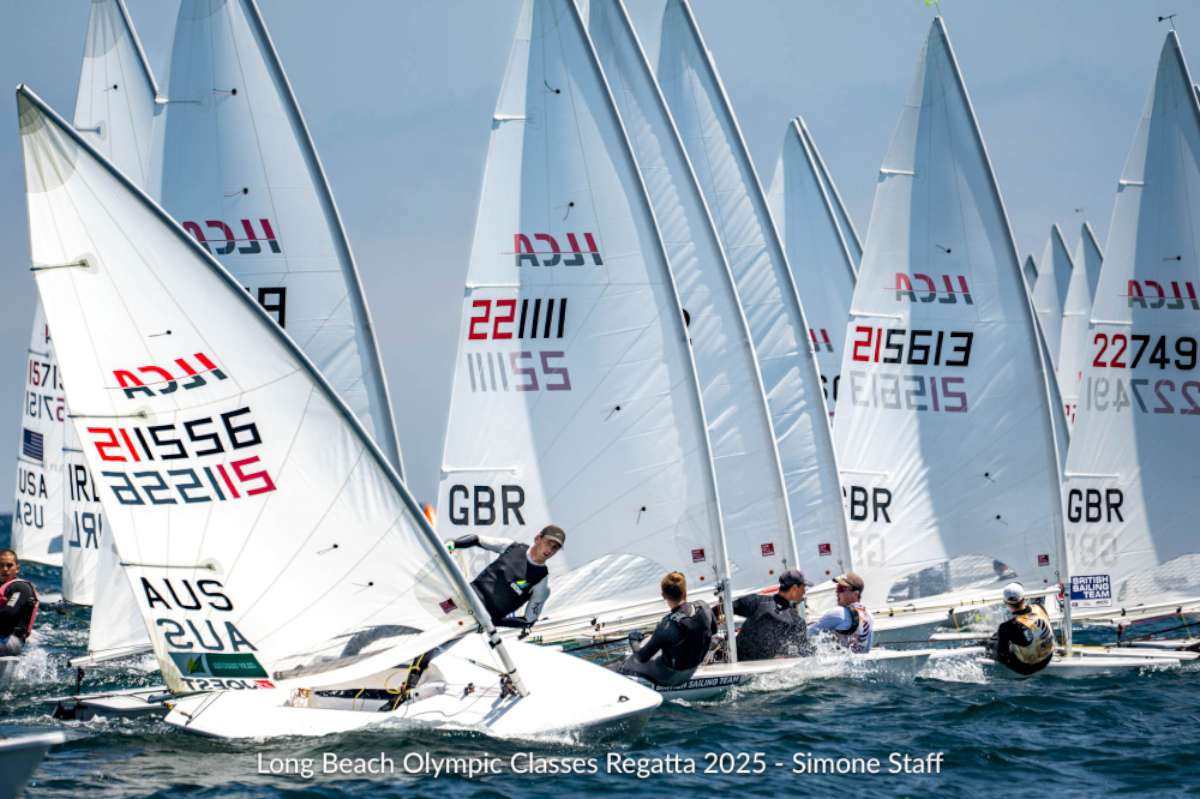TOP 10 DESTINATIONS
While sharing stories among friends one evening in our cockpit, someone asked ‘Where’s your favourite place’’ In the fading light, we tossed places and stories into the mix, agreeing, disagreeing and laughing, writes Annette Tuncel.
Later, my partner Tanil and I wondered, after 18 years of cruising, just where were our favourite spots’ Sometimes we’d enjoyed a place because of the people, other times the clear water, wildlife, scenery or climate. Usually, it was a combination. Here then are my 10 favourite cruising spots in no particular order.
Indonesia
Indonesia is a country of more than 17,500 islands; with often stunningly clear water and a rich culture and bureaucracy.
Beginning at Bandaneira, part of the Maluku group in the east, we sailed westwards through ink-blue water for two and half months, sharing the sea with local sailing prahus and the anchorages with village people and government officials.
Cruising gives us the chance to visit and meet people as they go about their normal lives, far from the usual tourist spots: together with new friends we sang – ‘Ombak putih, putih, putih (white waves) Ombak dating dari laut,’ (coming from the ocean), accompanied by toothless, grinning Mr Dickie on his ukulele, we scrabbled up the slopes of a slumbering volcano and sailed surrounded by hundreds of small, brightly painted canoes in the dying sun.
Only later, anchored in Benoa Harbour, Bali, did we join company once again briefly with other cruisers.
Although we cruised independently, each year there is a yacht rally through Indonesia, beginning in Darwin. The rally committee handles much of the tiresome bureaucracy and organises cultural events for many ports.
Thailand
Thailand is land of colours, exotic tastes and smells, smiling faces and ‘The Kings Cup Regatta’.
The Kings Cup Regatta was first sailed in 1987 to celebrate the 60th birthday of His Majesty the King of Thailand. Since then the regatta has grown in prestige and takes place every year in the first week of December.
We had moments of frenetic activity, frustration in light winds and above all fun as we raced by day and socialised in the evenings.
The regatta over, we sailed at our more leisurely pace on our yacht Kelebek among the steep rocky islands of Phang Nga Bay. Phang Nga is a bay of surprises: toadstool-shaped islands with their sides undercut by the sea, an entire village built on a platform over the sea with the rocky island rising sheer at its back and Phi Phi Island, even more beautiful than its postcard.
Azores
We stepped into the clouds of laughter, conversations, cigarette smoke and companionship inside Peter Café Sport in Horta, the main town on the island of Faial. After the gales, the calms, the drizzling rain, and the spartan conditions of 21 days at sea, the rich, warm atmosphere inside the café was overwhelming.
The Café Sport has been a gathering place for sailors for many years as they stop to rest and repair on their journey across the North Atlantic. Here, we were able to find mail, advice on where to find parts and services, companionship and a cold beer while Kelebek was safely tied in the harbour.
The Azores are part of Portugal, 700-1500 miles further to the east. Each island is a patchwork of varying shades of green vegetation contrasting with black rocks.
‘Bom dia,’ we greeted passers-by with, using the only Portuguese words we knew. We walked over black and white-rock mosaics of sailing ships and whaling scenes decorating the footpaths and past rows of white-washed buildings in search of a ‘hardware’ store and small tins of paint. Over the years, sailors visiting Horta have painted their yachts names on the harbour walls and paths and we were pleased to add Kelebek’s name to this colourful history of sea-fellowship.
Refreshed, it was time to explore the other islands of the archipelago.
Tahiti and the Society Islands
‘Hep, hep, hey.’ The chant drifted across the lagoon water in the early morning light. Paddles flashed in the sunlight then bit powerfully into the still water as the va’a (outrigger canoe) skimmed over crystalline waters. Tanil waved his paddle briefly.
During our months at Maeva Beach just south of Papeete on Tahiti, Tanil had begun paddling with a team of five Tahitians, I was learning to dance, to sway my hips, Tahitian style and we’d delighted in the competitions of traditional sports and dances during the Heiva festival. All while Kelebek was safe on a mooring out near the reef.
Maeva Beach seemed to possess a micro-climate of its own. Most days we played under sunshine and light breezes. Onshore, opposite us, Marina Taina offered comforts to mostly local boats. On the other side, 10 miles away across the ocean channel lay Moorea, its steep jagged mountains silhouetted each evening by the setting sun.
In the weeks ahead of us lay the sight of a humpback cruising alongside Kelebek off Moorea, the colourful, exhilarating experience of following 70 va’a as they raced across the ocean between the islands during the three-day annual Hawaiki Nui Race and the hundreds of anchorages and bays throughout the Society Islands.
Turkey
With many historic ruins thousands of years old still remaining along the shores of Turkey, it is possible to get a keen sense of history simply by cruising the coast.
The ruins are often easily accessible: a castle built by the Hospitaller Knights of St John dominates the harbour in Bodrum and ruins such as Cleopatra’s Baths partially submerged in Göcek Bay are an easy snorkel from a yacht anchored nearby. Others are an enjoyable short scramble up a hillside with the view and the ruins the reward at the top.
The daily markets are filled with olives, sWith the many marinas available, it is possible to leave the boat in safety and travel overland. Numerous charters fleets are based in Marmaris and Bodrum, an area favoured for yachting in summer.
Greece
We voyaged to islands that were quiet and rural, such as Amorgos and Kimolos where the sound of goat bells drifted from the hills and I smiled and attempted to chat with an old couple winnowing wheat with pitch forks. Ios rang through the night to sounds of young party-goers. In the pink and greys of dawn, we ghosted into Santorini, the remnants of an ancient volcanic eruption and perhaps source of the Atlantis myth. We sailed westwards, tossed by the whims of gods to Ithaca, home of legendary Ulysses and Penelope.
Greece has around 3000 islands, of which 170 or so are inhabited. Some islands rise as grey rocky cliffs vertical from an indigo blue sea; others offer white-sand beaches in sheltered bays or hills cloaked in thick pine forests.
Just as the landscape varies between the islands so too does the character. If you are searching for a particular landscape, character or social scene then it is simply a matter of choosing.
There is no better way than cruising to see the ancient ruins and religious sites abounding in Greece.
Cuba
Cruising the southern coast of Cuba, from the town of Santiago de Cuba in the east to Cayo Largo further west, offers an exciting mix of Cuban life, landscape and culture.
Santiago de Cuba is rich in revolutionary history. Here, we ate and drank in cafes surrounded by vibrant and passionate music, visited Moncada Barracks, scene of key events during the Revolution and learned something of the realities of daily life from new-found friends.
Anchored near small villages, forbidden to go ashore, we surreptitiously traded for vegetables in whispers with villagers who’d rowed or swum to the boat under the cover of darkness.
As we travelled through the Jardines de la Reina, a series of small islands and coral reefs strung offshore like pearls on a necklace, we experienced the generosity of fishermen when we traded for prawns or lobsters over a cup of sweet coffee, easily caught our dinner of fish or lobsters in clear waters, or sheltered, protected in bays, as a front passed over. Bureaucracy is all-pervasive, clearing in and out of towns essential, but the isolated Jardines de la Reina offered a respite, a chance to swim and enjoy the anchorages.
The Gambia
The Gambia is a small country in West Africa that clings for 300 kilometres along the shores of The Gambia River, but averages only 35 kilometres wide.
Swept into Africa by the brown river we searched and found hippopotamus, villagers poor, friendly and struggling to send their children to school and young teenagers strutting with the Nike symbol carved into their haircut. We anchored in submerged primeval-looking forests, off dusty villages crowded on market day and prayed that we wouldn’t foul fishermen’s nets.
Not far upstream from Banjul, the capital situated at the river mouth, we anchored behind James Island, a tiny island home to a few baobab trees and a crumbling fort, once used to hold slaves for sale and transportation.
Tourism operators market The Gambia as ‘the smiling coast’ and the ‘Switzerland’ of West Africa with its relative stability and neutrality and indeed the people are its main attraction.
In terms of sailing, The Gambia country is ‘off the beaten track’, and any navigational marks are poorly maintained. It is for the adventurous.
West Caribbean
Stretching from Mexico, south to Honduras, the West Caribbean encompasses a region rich in variety.
The sparsely vegetated flat limestone area of the Yucatan Peninsula, the sandy coral cays along the Belize Barrier Reef, the jungle-cloaked towering gorge of the Rio Dulce in Guatemala and the high islands of Honduras, green with dense forest. Throughout much of the region, the water is crystalline clear.
At times, we skimmed over turquoise waters protected by the Barrier Reef of Belize, taking care to weave our way through coral heads into an anchorage while the sun was still high enough to see into the water.
During the months of the hurricane season we travelled deep into Guatemala along the Rio Dulce until the river was only 50 metres wide and the surface carpeted by water hyacinth.
The West Caribbean is home to Mayan Indians, descendants of early Spanish settlers and African slaves, and westerners, many of whom are adventurers, eccentrics, misfits and missionaries, carving out a life.
Dive sites of outstanding beauty such as ‘The Blue Hole’ also occur in this region. Charter yachts are available in Belize and Honduras.
Bay of Islands, New Zealand
Sailing within the Bay of Islands in northern New Zealand is relaxing and enjoyable. With hundreds of bays, anchorages and islands all within a short distance there is always a swimming or The landscape varies from rolling rural pastures of emerald green to thick deep green forests to grey rocky slopes rising vertical from the sea.
A number of islands and some mainland areas are public conservation land managed by the Department of Conservation with walking tracks of varying difficulty. There are magnificent views over the Bay from some of these tracks.
The Opua Marina offers berths and facilities, with a small café and supermarket close by to provide a few comforts. Nearby Paihia has a large supermarket and is a popular tourist destination. The historic township of Russell, once known as ‘The Hellhole of the Pacific’, now has a quiet charm and opposite is the Waitangi Treaty Grounds where the Waitangi Treaty, the founding document of New Zealand, was signed in 1840.
The Bay of Islands offers a little of everything, all within a small, protected area.
When cruising on our sailboat we are at the helm of our own adventures. Wherever we go, something exciting and new awaits us – conditions on the day, the people we meet and even our own attitude.
These all determine our adventures and memories. Life’s short. Where are your favourite places?























